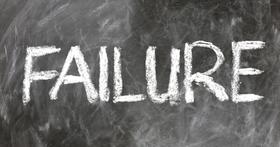For the 2025-26 school year, there are 2 public schools serving 1,776 students in Bryan City School District. This district's average testing ranking is 8/10, which is in the top 30% of public schools in Ohio.
Public Schools in Bryan City School District have an average math proficiency score of 67% (versus the Ohio public school average of 55%), and reading proficiency score of 67% (versus the 60% statewide average).
Minority enrollment is 16% of the student body (majority Hispanic), which is less than the Ohio public school average of 34% (majority Black).
Overview
This School District
This State (OH)
# Schools
2 Schools
3,571 Schools
# Students
1,776 Students
1,669,776 Students
# Teachers
120 Teachers
96,752 Teachers
Student-Teacher Ratio
15:1
15:1
Student By Grade
District Rank
Bryan City School District, which is ranked within the top 30% of all 916 school districts in Ohio (based off of combined math and reading proficiency testing data) for the 2022-2023 school year.
The school district's graduation rate of 95% has stayed relatively flat over five school years.
Overall District Rank
#246 out of 931 school districts
(Top 30%)
(Top 30%)
Math Test Scores (% Proficient)
67%
54%
Reading/Language Arts Test Scores (% Proficient)
67%
60%
Science Test Scores (% Proficient)
69%
63%
Graduation Rate
(21-22)≥95%
86%
Students by Ethnicity:
Diversity Score
0.28
0.53
% American Indian
n/a
n/a
% Asian
1%
3%
% Hispanic
10%
8%
% Black
1%
17%
% White
84%
66%
% Hawaiian
n/a
n/a
% Two or more races
4%
6%
All Ethnic Groups
District Revenue and Spending
The revenue/student of $16,348 in this school district is less than the state median of $17,295. The school district revenue/student has stayed relatively flat over four school years.
The school district's spending/student of $14,592 is less than the state median of $17,243. The school district spending/student has stayed relatively flat over four school years.
Total Revenue
$29 MM
$28,879 MM
Spending
$26 MM
$28,792 MM
Revenue / Student
$16,348
$17,295
Spending / Student
$14,592
$17,243
Best Bryan City School District Public Schools (2025-26)
School
(Math and Reading Proficiency)
(Math and Reading Proficiency)
Location
Quick Facts
Rank: #11.
Bryan Elementary School
(Math: 74% | Reading: 70%)
Rank:
Rank:
8/
Top 30%10
1301 Center St
Bryan, OH 43506
(419) 636-6931
Bryan, OH 43506
(419) 636-6931
Gr: PK-5 | 872 students Student-teacher ratio: 15:1 Minority enrollment: 17%
Rank: #22.
Bryan Middle School/high School
(Math: 62% | Reading: 65%)
Rank:
Rank:
6/
Top 50%10
1000 W Fountain Grove Drive
Bryan, OH 43506
(419) 636-4536
Bryan, OH 43506
(419) 636-4536
Gr: 6-12 | 904 students Student-teacher ratio: 15:1 Minority enrollment: 15%
Frequently Asked Questions
How many schools belong to Bryan City School District?
Bryan City School District manages 2 public schools serving 1,776 students.
What is the rank of Bryan City School District?
Bryan City School District is ranked #243 out of 916 school districts in Ohio (top 30%) based off of combined math and reading proficiency testing data for the 2022-2023 school year.
What is the racial composition of students in Bryan City School District?
84% of Bryan City School District students are White, 10% of students are Hispanic, 4% of students are Two or more races, 1% of students are Asian, and 1% of students are Black.
What is the student/teacher ratio of Bryan City School District?
Bryan City School District has a student/teacher ratio of 15:1, which is lower than the Ohio state average of 17:1.
What is Bryan City School District's spending/student ratio?
The school district's spending/student of $14,592 is less than the state median of $17,243. The school district spending/student has stayed relatively flat over four school years.
Recent Articles

School Vouchers: Updated Pros and Cons (2025 Review)
Comprehensive 2025 analysis of school vouchers, weighing benefits and challenges for families, funding, outcomes, and policy directions.

Benefits and Drawbacks of Homework in 2025
Explore updated 2025 insights on homework鈥檚 benefits, drawbacks, mental health impact, best practices, and policy trends in U.S. public schools.

Charter Schools vs Public Schools 2025: Key Differences & Trends
Explore updated 2025 insights comparing charter schools vs public schools, enrollment, academic outcomes, funding, and real-world examples for families and educators.





